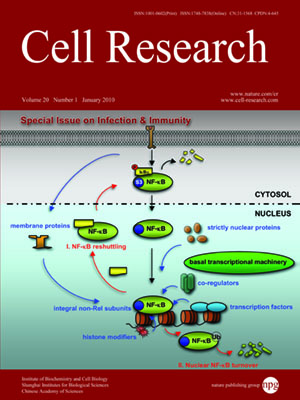
Volume 20, No 1, Jan 2010
ISSN: 1001-0602
EISSN: 1748-7838 2018
impact factor 17.848*
(Clarivate Analytics, 2019)
Volume 20 Issue 1, January 2010: 4-12
REVIEWS
Heterogeneity and plasticity of T helper cells
Jinfang Zhu and William E Paul
Laboratory of Immunology, National Institute of Allergy and Infectious Diseases, National Institutes of Health, Bethesda, MD 20892, USA
Correspondence: Jinfang Zhu, William E Paul,(jfzhu@niaid.nih.gov; wpaul@niaid.nih.gov)
CD4 T helper (Th) cells play critical roles in adaptive immune responses. They recruit and activate other immune cells including B cells, CD8 T cells, macrophages, mast cells, neutrophils, eosinophils and basophils. Based on their functions, their pattern of cytokine secretion and their expression of specific transcription factors, Th cells, differentiated from na飗e CD4 T cells, are classified into four major lineages, Th1, Th2, Th17 and T regulatory (Treg) cells, although other Th lineages may exist. Subsets of the same lineage may express different effector cytokines, reside at different locations or give rise to cells with different fates, whereas cells from different lineages may secrete common cytokines, such as IL-2, IL-9 and IL-10, resulting in massive heterogeneity of the Th cell population. In addition, the pattern of cytokine secretion may switch from that of one lineage toward another under certain circumstances, suggesting that Th cells are plastic. Tregs are also more heterogeneous and plastic than were originally thought. In this review, we summarize recent reports on heterogeneity and plasticity of Th cells, and discuss potential mechanisms and implications of such features that Th cells display.
CD4 T helper (Th) cells play critical roles in adaptive immune responses. They recruit and activate other immune cells including B cells, CD8 T cells, macrophages, mast cells, neutrophils, eosinophils and basophils. Based on their functions, their pattern
FULL TEXT | PDF
Browse 2298


